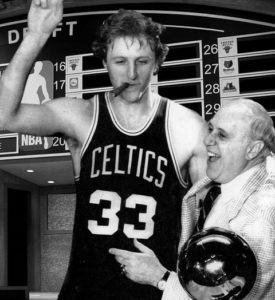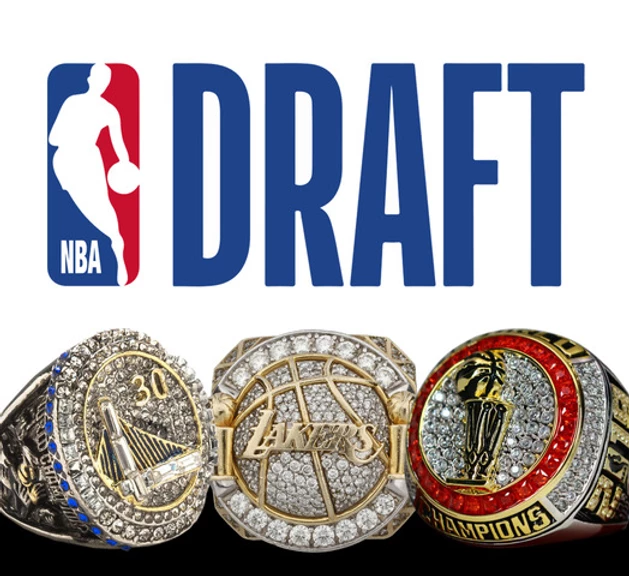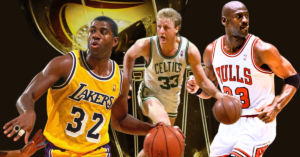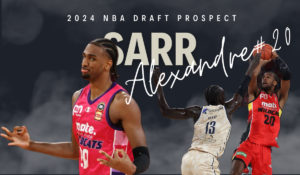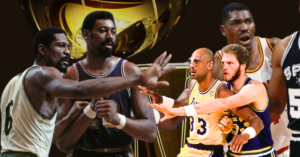Understanding Why The NBA Draft Is Only 2 Rounds
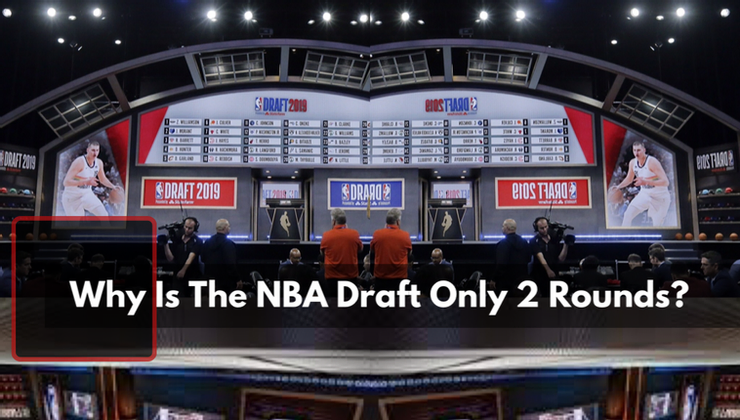
The NBA Draft had as many as 21 rounds before implementing the 2 round system that we’re accustomed to today. If you’re a basketball junkie like us then at some point you’ve probably wondered why is the NBA Draft Only 2 Rounds? Read with us as this question is answered and more. So…
Why is the NBA Draft Only 2 Rounds?
The NBA Draft was a long drawn out process. Since few of the players picked after the second and third round ever really played in the NBA, the league cut the draft down to 3 rounds in 1988 and then to the two rounds that we have today in 1989.
In the past, NBA teams would select NBA Draft picks until they ran out of prospects to choose. This means that in some cases, the draft would take place on multiple days, continue for over 3 days and 7 plus rounds.
So what’s the difference between the first and second rounds of the NBA Draft?
One of the biggest differences between being selected in the first or second round of this American professional league is money and prestige. For starters, from a salary standpoint, different rules apply to first round draft picks. The players that are picked in the first round, contracts are guaranteed and second round contracts are not.
If the players want to sign them is up to them. For, example, there are a lot of international prospects who do not come over to the NBA right away. One such example was the Spanish point guard and current member of the Phoenix Suns, Ricky Rubio.
Ricky Rubio was one of the two point guards David Kahn, the then GM of the Minnesota Timberwolves selected in the top 10 of the 2009 NBA Draft. A move that perplexed many then, and is considered one of the biggest opportunities ever missed on NBA Draft night, because he took two point guards over Steph Curry!
Rubio was selected as the 5th pick in that year’s draft. He waited for 2 full seasons before he joined his team. But he was still on his rookie contract.
Unlike some other leagues, the NBA has a Rookie Salary Scale on which it bases the contracts that the first-round draft picks can sign. This salary scale was implemented in 1995. It’s a product of some rookies not signing contracts until they received a favorable deal from the team that drafted them.
This salary scale is also a product of a lot of careers not fulfilling their promises at the end of the 90s. As the former NBA writer and current popular podcast host, Bill Simmons, calls this generation, “Too Much Too Soon”, it is obvious why the leadership of the NBA, with David Stern at the helm during that time instituted such a scale. Players under 20 were signing enormous contracts, which became the ruin for many of those young men.
So if we, for example, take the first-round picks from last year’s draft we will see that the first pick Zion Williamson makes close to 10 million per year. The fifth pick, Darius Garland earns approximately 6.4 million, the fifteenth pick makes about 3.3 million and the last pick of the first round of last year’s draft makes approximately 1.3 million dollars. All of them received a 4-year contract. The first two years of the contact are guaranteed. Years three and four of the Rookie Scale contract have a team option.
As mentioned above, unlike the players taken in the first round of the draft, the players taken in the second round are not guaranteed contracts. But that does not mean that some of them do not sign multi-year contracts that are both guaranteed and that are way above the league minimum.
For example, in the last year’s draft, Carsen Edwards was taken by the Boston Celtics in the second round and he got a 4-year deal worth more than 6 million dollars in total. And, three out of those four years are fully guaranteed.
On the other hand, there are players like Bol Bol. He signed a two-way contract. This means that he will be spending his time between the team that selected him, the Denver Nuggets, and one of their affiliate teams in the G League.
Towards the end of the draft, you might find players who have gotten one year or two-year deals that are partially guaranteed or non-guaranteed at all. One such player is Jalen McDaniels, picked by the Charlotte Hornets.
McDaniels first signed a one year deal, worth the league minimum salary, but non-guaranteed. Then his contract was converted to a two-way contract. His contract was then again converted from a two-way contract to a multi-year partially guaranteed contract.
When did the Draft go to two rounds?
In 1989, the NBA implemented a two-round draft system. As we have mentioned earlier, the NBA use to have as many rounds as it took to select every single prospect that was eligible for the NBA Draft. That created a long, drawn-out process. That was especially the case later when there was some real money to be made in the NBA and more and more prospects would sign on to be eligible in the draft.
In some cases, the draft would have as much as 21 rounds. By the times the 70s rolled around the number of rounds stabilized around to 10 every year. Later on, the NBA started to shorten the number of rounds.
The first change was to shorten the number of rounds to 7, which happened in 1985. Three years later the league in 1988 there was another drastic cut to the number of rounds as the league went from 7 rounds to three. A year later, in 1989, the NBA finally switched to the current two-round draft system and it has stayed like that for quite some time.
People have been pro and against the number of two rounds as long as the rule was implemented. But, during the last few years, especially with the influx of great international talent as well as the improvement G League, there has been a push in some circles to expand the draft to three rounds. But the pessimists or skeptics would say that since the NBA has had two rounds, there have only been 20 out of 903 players who were selected in the second round as NBA Draft Picks and who have made the All-Star team.
Second Round NBA Draft picks that became All Stars since 1989 include:
Clifford Robinson (1989)
Antonio Davis (1990)
Cedric Ceballos (1990)
Nick Van Exel (1993)
Rashard Lewis (1998)
Manu Ginobili (1999)
Michael Redd (2000)
Gilbert Arenas (2001)
Mehmet Okur (2001)
Carlos Boozer (2002)
Mo Williams (2003)
Kyle Korver (2003)
Paul Milsap (2006)
Marc Gasol (2007)
DeAndre Jordan (2008)
Goran Dragic (2008)
Isaiah Thomas (2011)
Draymond Green (2012)
Khris Middleton (2012)
Nikola Jokic (2014)
The NBA Draft 2 round formula works
So, why is the NBA Draft Only 2 Rounds? The NBA, unlike some other professional sports leagues in the USA, was not afraid to shake things up and to improve its operating model. It has been reducing draft rounds until it found a formula that worked. In this case that is 2 full rounds, while undrafted players are given many different ways to impress GMs afterward and earn their contracts. It also implemented one of its most important changes, the rookie scale contract. Judging by times past, when players earned as much as established stars from their first contract, it has saved many teams, as well as many potential NBA Draft picks from self-combusting in a major way.
NBA DRAFT RELATED ARTICLES:
Does Everyone In The NBA Draft Get Picked?
The 2000 NBA Draft: Why Was It So Bad?
Future NBA Draft Picks: Top Assets For 2020 And Beyond
NBA Protected And Unprotected Draft Pick Explained
2020 NBA Draft Key Updates: Early Entry, Withdrawal, Lottery And Combine. Here’s What To Know


